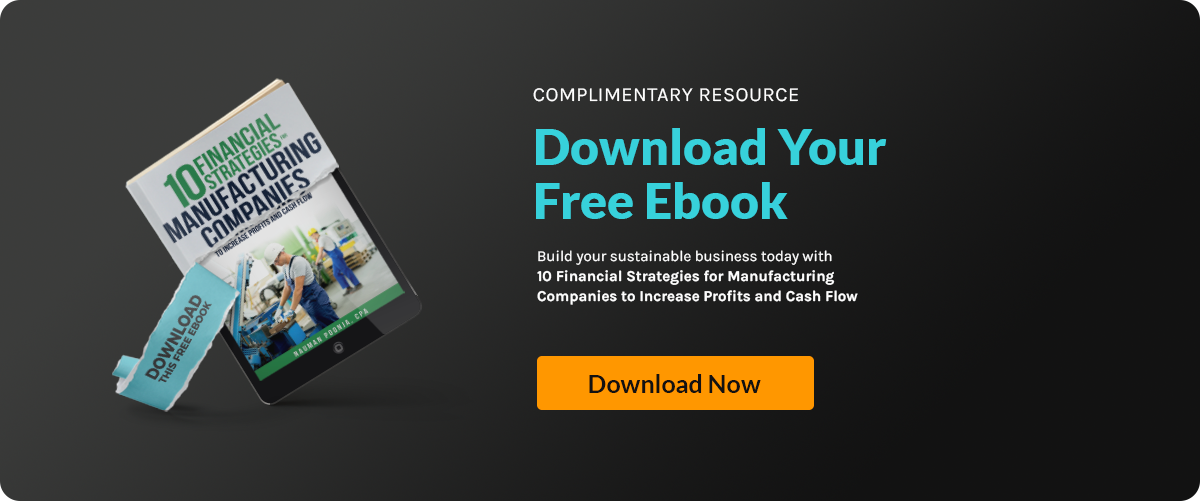Strategic Capital Allocation for Impact in Manufacturing

Have you ever felt like your business is doing well, but something’s holding it back from hitting that next level? For many companies, it’s not about a lack of effort. It’s about how they’re distributing their resources. In manufacturing, where every dollar counts, the way you allocate capital can either drive growth or create roadblocks.
You’re not alone in facing this challenge. In fact, a recent survey found that 72% of CFOs believe their capital allocation process needs improvement, and only 40% feel their approach is flexible enough to adapt to constant changes. This highlights just how critical a strategic and adaptable plan is for long-term success.
In this guide, we’ll break down how you can strategically distribute capital to boost your business’s development and stability. Keep reading to discover practical steps to make your financial resources work smarter, not harder.
Capital Allocation to Manufacturers
Effective capital allocation is crucial in shaping a company’s growth and success. By directing capital toward key strategic initiatives, manufacturers can invest in organic growth and drive long-term value. Successful capital allocation strategies focus on balancing potential risks with high returns, ensuring resources are used effectively. This approach ensures that capital investments lead to sustainable growth while maximizing profitability and future opportunities.
Important Things to Consider for Manufacturers Capital Distribution
Manufacturer's capital distribution refers to how a company manages and distributes its resources to achieve long-term growth and profitability. The decisions made in this process directly impact a company’s ability to meet strategic priorities and maximize shareholder value. For manufacturers, effective capital distribution ensures that resources are allocated efficiently to create value and support future growth.
Here are important things to consider for manufacturers' capital distribution:
1. Evaluate Growth Opportunities
Before distributing resources, manufacturers must thoroughly assess potential growth opportunities. This involves looking at emerging trends in the sector and analyzing market demands to identify where high returns can be achieved. Prioritizing investments in areas with the most growth potential ensures that resources are not wasted on low-return projects and maximizes long-term value for the company.
2. Risk Management
Risk management is essential when making resource distribution decisions. Manufacturers must evaluate the risks associated with new investments, including market volatility, operational challenges, and long-term payback periods. By considering these factors, businesses can mitigate risks and avoid decisions that might lead to significant losses, ensuring that their distribution strategy supports sustainable growth.
3. Reinvest in Core Operations
Manufacturers should consider reinvesting in their core operations to improve efficiency and productivity. This could involve upgrading technology, enhancing production processes, or expanding existing operations. By reinvesting in areas that directly impact operational efficiency, companies can foster a culture of innovation and remain competitive while also improving long-term profitability.
4. Balancing Shareholder Expectations
Balancing shareholder expectations with reinvestment strategies is a crucial aspect of resource distribution. While shareholders may expect returns through dividends or share price increases, manufacturers must also focus on reinvesting in strategic growth initiatives. This balance ensures that immediate shareholder interests are met while also driving value-creating initiatives that enhance the company’s competitive advantage in the long term.
5. Performance Management and Strategic Planning
Manufacturers should regularly review their performance management systems to ensure alignment with long-term strategic priorities. This includes using data analytics to track progress, measure the effectiveness of resource distribution, and make adjustments as needed. Regular reviews allow companies to ensure that their capital distribution decisions are supporting profitable growth and creating value for all stakeholders.
Understanding the Investment vs. Spending Mindset in Strategic Capital Allocation
In the field of strategic capital allocation, the approach one takes can significantly influence success. Here are the key differences between an investment mindset and a spending mindset.
The Investment Mindset
An investment mindset prioritizes the long-term value and potential return of every dollar laid out. When operating under this mindset, each financial decision is intertwined with a strategic objective aimed at enhancing future gains. Here’s how:
- Focus on Returns: It's not just about the initial output but more about the anticipated growth and benefits.
- Strategic Goals: Every financial decision aligns closely with overarching business goals, ensuring that funds contribute to sustainable development.
- Calculated Risks: Decisions are made with careful analysis, balancing risk with opportunity for reward.
The Spending Mindset
Conversely, a spending mindset often revolves around the short-term need to utilize allocated funds. This approach can be counterproductive, as it might prioritize expenditure over necessity:
- Use-It-Or-Lose-It: There might be pressure to exhaust budgets to safeguard future allocations, even if spending isn’t essential.
- Lack of Strategic Alignment: Purchases may not always link back to strategic goals, risking inefficient capital use.
- Short-Term Focus: Emphasis is placed on completing transactions rather than evaluating potential long-term impact.
Adopting an investment mindset in strategic capital allocation can foster greater alignment with long-term objectives and more efficient use of resources. By focusing on outcomes over expenditures, organizations can enhance their financial resilience and support sustainable growth.
Bridging the Gap Between Business Objectives and Allocation Strategy
The connection between business objectives and an allocation strategy is essential for driving long-term growth. An effective allocation strategy ensures that resources are deployed to meet the company’s strategic goals, creating value for both the business and its stakeholders. Bridging the gap between objectives and allocation requires clear decision-making and aligning priorities to make the best use of available resources.
Here’s a step-by-step guide to bridging the gap between business objectives and an allocation strategy:
Step 1: Define Clear Business Objectives
Start by identifying the company’s long-term and short-term goals. Clear objectives help decision-makers understand where resources should be focused, ensuring that allocation decisions align with the company’s strategic direction.
Step 2: Assess Current Resource Allocation
Review how resources are currently being used across business units. Determine if they are supporting key priorities or if adjustments are needed to align with long-term value creation.
Step 3: Prioritize Strategic Initiatives
Identify the most important initiatives that will help achieve the company’s goals. Decision-makers, including executives and the board of directors, should focus on high-impact projects that align with the overall business strategy.
Step 4: Implement Best Practices for Allocation Decisions
Ensure that best practices are followed in the decision-making process. This includes involving key stakeholders, such as the CFO and other executives, to assess potential risks and returns before committing resources to new investments.
Step 5: Continuously Review and Adjust the Strategy
As business goals evolve, the allocation strategy must also adapt. Regularly review the allocation strategy to ensure it remains aligned with the company’s strategic priorities and market conditions. Adjustments may be needed to reallocate resources toward more promising opportunities or to avoid low-return projects.
The Benefits of Continuous Capital Allocation Using Real-time Data
Continuous capital allocation leveraging real-time data offers several advantages over sporadic, episodic allocation. Here's why:
1. Agility and Responsiveness
- Quick Adaptation: By continuously assessing capital needs with real-time data, businesses can swiftly redirect resources in response to market shifts. This agility ensures that they are always aligned with the freshest market trends and opportunities.
- Competitive Edge: Brands like Amazon and Tesla have thrived by adapting quickly to ever-changing conditions, demonstrating how responsive capital allocation can foster innovation and growth.
2. Optimized Resource Utilization
- Efficiency: Real-time data allows for precise allocation, ensuring that capital is directed where it's most needed. This leads to better resource management, preventing waste and enhancing profitability.
- Risk Management: Continuous monitoring helps identify potential risks early, allowing companies to take preemptive action to mitigate them effectively.
3. Timely Decision-Making
- Informed Choices: With a steady stream of data, businesses can make decisions based on up-to-date information rather than outdated reports. This leads to smarter investments and more accurate forecasting.
- Proactive Strategy: By anticipating changes and acting proactively, companies can capitalize on opportunities before competitors even recognize them.
4. Enhanced Stakeholder Confidence
- Transparency: Providing stakeholders with real-time insights into how and where funds are allocated enhances trust and confidence in management
- Financial Stability: Consistent capital adjustments reinforce stability and predictability, appealing to investors and partners.
5. Scalability and Growth
-
Supporting Expansion: Continuous allocation facilitates seamless scaling, allowing businesses to expand operations without financial bottlenecks.
-
Sustainability: Long-term growth is supported by maintaining a lean and adaptive financial structure, avoiding the pitfalls of rigid, less frequent allocation strategies.
Adopting a continuous capital allocation approach founded on real-time data transforms it from a reactive chore into a proactive strategy, empowering businesses to thrive in a rapidly evolving landscape.
Strategic Asset Allocation to Make the Most of Capital
Strategic asset allocation in manufacturing refers to the process of distributing resources across various assets to maximize returns while minimizing risks. This approach helps manufacturers make the most of their investments by focusing on long-term growth. It involves careful planning and aligning resources with the company’s broader goals as the following:
Reallocating Resources for Higher Returns
Consider a manufacturer that has been investing heavily in outdated equipment. After reviewing their operations, they decide to redirect those resources toward newer, more efficient machinery. This strategic asset allocation led to increased productivity and reduced operating costs, allowing the company to maximize returns on its investment.
Balancing Risk and Growth Opportunities
Another example is a manufacturer that operates in both stable and volatile markets. By adopting strategic asset allocation, they carefully allocate resources between established markets and higher-risk, higher-reward ventures. This approach ensures that the company can pursue growth opportunities while maintaining stability in its core operations.
Optimizing Asset Utilization
A company struggling with underutilized assets, such as excess warehouse space, decided to rent out its unused facilities. This strategic decision not only reduced overhead costs but also generated additional revenue. This example shows how manufacturers can use strategic asset allocation to turn underperforming assets into profitable ventures.
See how Accounovation can Improve your Resource Allocation
The manufacturing industry is experiencing rapid changes, with increasing pressure to optimize resources and improve operational efficiency. Accounovation specializes in helping manufacturers optimize their asset utilization by providing expert insights and tailored strategies. Our team works closely with you to identify areas for improvement, reduce inefficiencies, and ensure your resources are aligned with your long-term goals.
Contact Accounovation today to see how we can help improve your resource allocation and boost your business performance!







